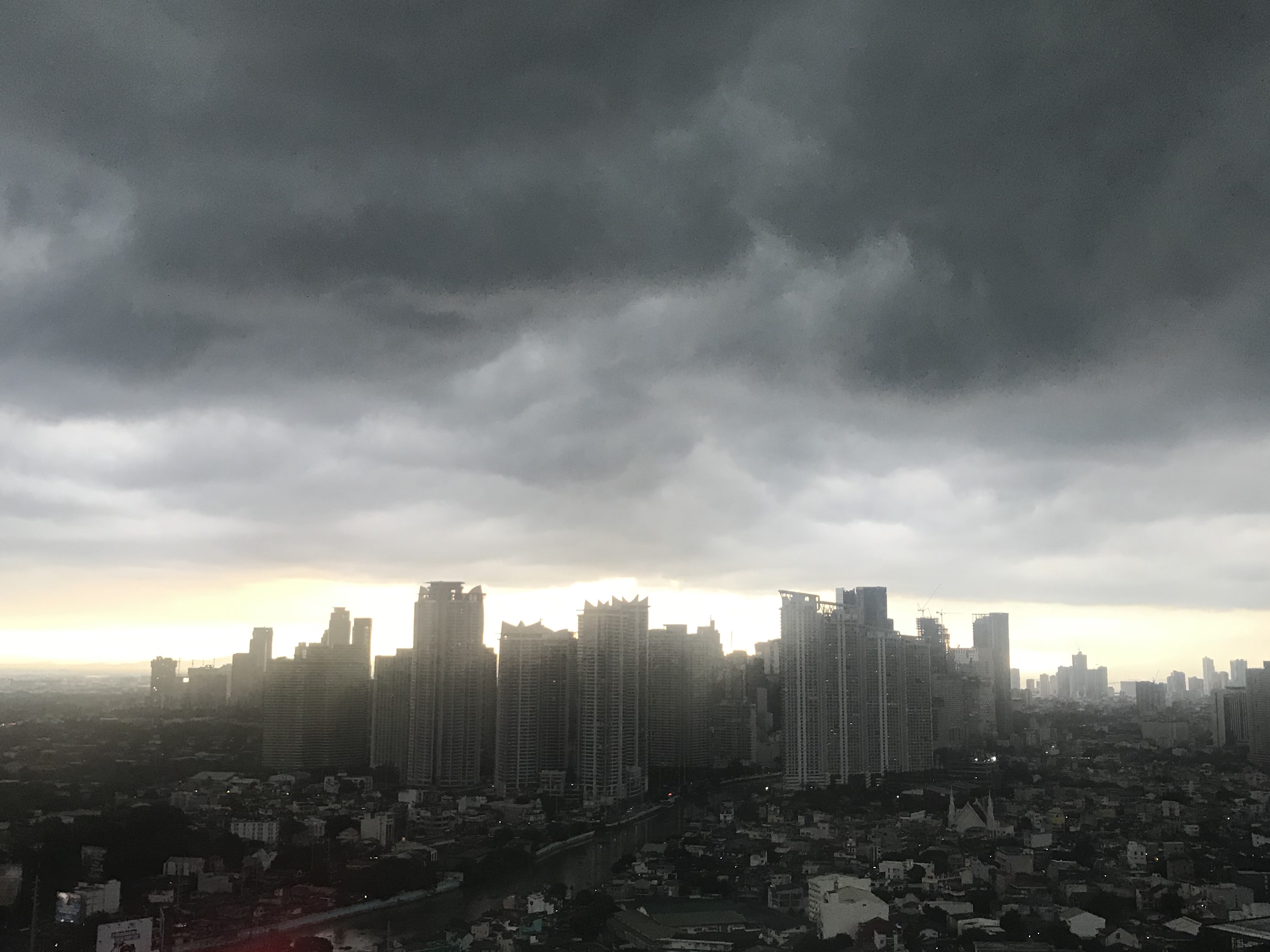
Paghinto ng sasakyan ko sa dulo ng Tulay Jones na inaanuran sa ilalim ng Ilog Pasig, kapansin-pansin ang monumentong bumabati sa bawat dyip, kotse at iba pang motoristang tumutuloy sa tila isang dayuhang lupain dahil sa maraming karatulang nasusulat sa Intsik, mga establismentong oryental ang kayarian, at dominanteng kaanyuang singkit ang mga mata at manilaw-nilaw ang balat paris ng sa akin. Binondo at Manila Chinatown ang taguri sa lugar na ito, at sa pagtigil ng sasakyan ko sa tapat ng arko, siya namang simula ng paglalakbay ko.
Kulang isang kilometro lamang ang Quintin Paredes, ngunit higit dalawampu’t limang sangay ng iba’t-ibang bangko ang nakatayo rito. Dalawa sa mga ito ang pag-aari ng mga mestisuhing Ayala, ang Bank of the Philippine Islands na kakatwa sa prominenteng karatulang Tsino. May siyam na sangay dito ang RCBC samantalang kulang tatlumpu ang sa pinakamalaganap na bangko, ang Metrobank. Napag-isip-isip ko habang lulan ng kalesa na marahil, pinakamalaking konsentrasyon ng mga bangko ang Chinatown sa bilang na higit isandaan at limampu, kasama ang mga dayuhang bangkong Citibank, Chinatrust, Hongkong Shanghai at iba pa. Kinunan ko ng litrato ang mga nakita ko para patunayang bago pa naghari ang Makati, sentrong pangkalakalan na ang dating Binundok na itinakdang tahanan ng lahing Tsino noong panahong kolonyal. Sa katunayan, bago pa dumating ang mga Kastila, nakikipagbarter na rito sa dating kilalang parian ang mga ninuno ko mula sa bansang Tsina. \
Makikitid ang mga lansangan sa Chinatown, ngunit natuklasan kong bawat isa ay may ipinagmamalaking produkto. Pamoso ang Ongpin sa mga tindahan ng alahas. Hindi pa man matindi ang sikat ng araw, tila mumunting araw na ang ginintuang singsing, relos, kuwintas, pulseras at relikaryo dahil sa kakinangan nila. Kaakit-akit hindi lamang ang iba’t-ibang kulay ng mga batong nakabaon kundi ang bawat disenyo ng mga ito mula sa dragon, hugis-puso, eksotikong bulaklak, at iba pa. Bagay sa balat-Tsino ang ginto; sa tingin ko, salamin din ito ng gintong kalooban ng liping nakipagsapalaran sa ibayong lupain at binuhay ang ekonomiya nito.
Sing-ingay naman ng piyesta ang Kalye Raon dahil sa mga produktong de-kuryente, panteknolohiya at elektroniko. Matatagpuan dito ang mga videoke, bilihan ng compact disc, antenna ng telebisyon, mga salangan ng digital, audio at video cd, sound system, kompyuter, printer at iba pa. Madidiskubre namang nasa Kalye Evangelista ang tindahan ng mga kagamitang pang-industriya samantalang nasa Masangkay at Benavidez ang mga kagamitang pang-automotibo. Sentro ng kagamitang hardware ang Kalye Alonzo. Nasa Kalye Nueva ang mga naglilingkod sa industriya ng sapatusan para sa mga balat, de-gomang suwelas, at bakal. Nasa Kalye Gandara naman ang mga tagasuplay ng tolda at gamit sa giikan ng butil. Nakapagitan sa mga ito ang iba’t-ibang sanlaan at palitan ng pera. Iba’t-iba ang mga produkto, patunay ng kapangahasang nagbubunga ng kasaganaan dahil sa kasabay na sipag at tiyaga.
Makikita sa Tomas Pinpin ang mga modernong kasangkapan, sofa, at kandelabrang kristal. Nakakalat naman sa Divisoria at Condensa ang mga tindahan ng papel at gamit pampaaralan, datapwat para sa kumpletong suplay ng gamit pang-opisina batay sa mga napagtanungan, dinarayo ng publiko ang nadaanan kong Times Trading sa Quintin Paredes. Ganunpaman, nasa Divisoria pa rin ang pinakamaraming mapagpipilian ng mga produktong wet-and-dry, mula oryental na mga gamot, Buddha at gamit sa feng shui. Kilala ang Kalye Ylaya sa mga tela at nahabi nang kasuotan samantalang ang Abad Santos malapit sa kanto ng Tayuman sa mga makinang pantahi at mga gamit panulsi. Nakita ko naman sa Kalye Dagupan ang mga nagbebenta ng palay maging ang kanilang mga trak. Sa pagbili ko ng sobreng pang-ang pao, kinausap ako ng matandang may-ari sa mga wikang Fookien at Mandarin, at sa pagsagot ko sa mas gamay na wika, ang ngiti niya’y nagdala sa amin sa mas pamilyar na daigdig ng mga Tsino.
Maliban sa kalakalan, may dalawang dosenang kainan sa Binondo mula panaderyang nag-aalok ng hopya hanggang restorang naghahain ng lauriat. Kahit masikip at maalinsangan, masasarap at mura ang pagkain. Kabilang sa mga dinarayong kainan ang Lido sa Kalye Alonzo kung saan nakararahuyo ang kape, ang Lingnam na gumagawa ng sariwang pansit araw-araw, ang President sa Ongpin na may lauriat fine dining kung saan dalubhasa sila sa lamang-dagat. Lamang-dagat din ang puhunan ng Royal Garden at Green Lake, samantalang pamoso ang five treasure soup ng Chuan Kee. Maipagmamalaki naman ng Quintin Paredes ang Golden Palace, Dragon Seed at ang Ocean Dragon, na katitikmanan ng Buddha soup. Para sa panghapong tsaa at siopao o siomai, dinarayo ang Wah Yuen sa Escolta ngunit para sa mabilisang kainan ang Mey Lin sa Carvajal, Shin Tong Yon sa Benavidez at Ha Yuan at Country Chicken House sa Masangkay. Isa sa pinakamatandang kainan ang Delicious na ibinangon noon pang Dekada ’30. Sa bago nitong tahanan sa F. Torres, hinainan ako ng nakabubusog na pansit at lugaw.
Dumaan ako sa simbahan ng Binondo, pero naisip kong sa isang templong Budista magbulay bago umuwi. Sa pakikisalamuha ko sa kapwa-Tsino, natuklasan ko nang personal ang aking sarili. Hindi nga pala ako uuwi, dahil kababalik ko lamang sa kasaysayan ng aking lahi.


























